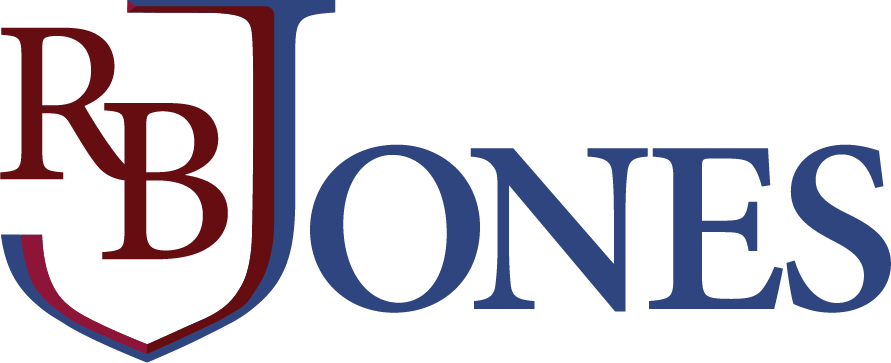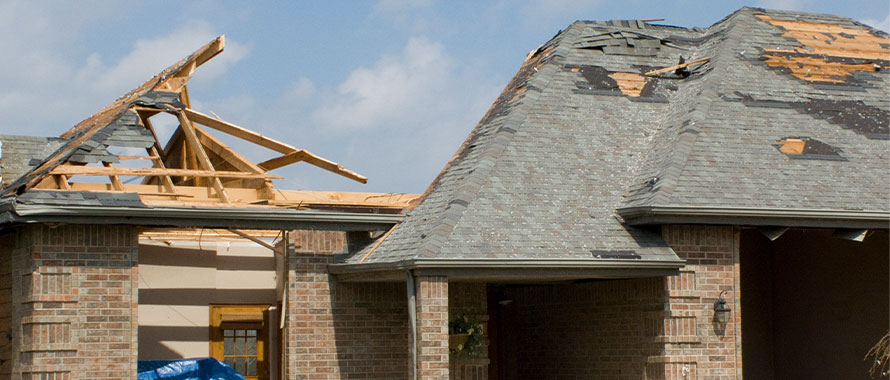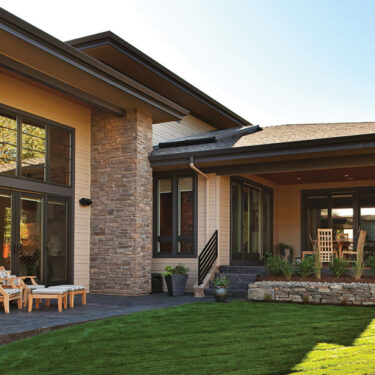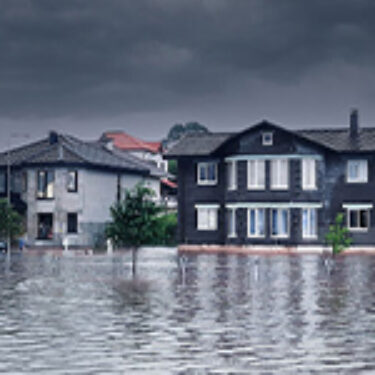Inside This Article:
- A homeowner’s metal roof was partially torn off during a recent thunderstorm in Rogersville, Alabama, causing water damage to the home.
- It was the third severe weather event to hit Rogersville this year, including two earlier tornadoes.
- Convective storms are becoming more frequent and severe, bringing dangerously high winds to areas not commonly impacted by this type of event.
- Many Homeowners Insurance policies today have roof settlement schedules that determine claim payout amounts based on the age of the roof.
- Some policies cover the Replacement Cost Value (RCV), which pays the full cost to replace the roof, while others provide Actual Cash Value (ACV) coverage, which accounts for the age and condition of the roof.
A record number of tornadoes have hit the northern Alabama community of Rogersville this year, but it was a June 18 convective storm that caused the greatest damage so far. This severe thunderstorm partially ripped off the roof of one home, while the homeowners were taking shelter in the basement. It marked the third severe weather event in the Rogersville area this year after two tornadoes hit the region within the past few months, WAFF News reported.
According to the homeowner, the winds during this latest storm seemed stronger than what he witnessed during a recent tornado, and his home suffered water damage where the roof peeled off, the outlet reported. The home is located in Lauderdale County in northern Alabama, which has already seen a record number of tornadoes in 2025.
“A small town seeing multiple convective storms in a row is a bit surprising, but the frequency of these systems that produce tornadoes and thunderstorms has picked up significantly,” said Zack Hall, Senior Underwriter, Personal Insurance, Burns & Wilcox, Birmingham, Alabama. “This specific area has really been the target for some severe convective winds.”

A small town seeing multiple convective storms in a row is a bit surprising, but the frequency of these systems that produce tornadoes and thunderstorms has picked up significantly.
Tornado activity has surged in 2025, reaching many areas outside of “Tornado Alley” states – such as Texas, Oklahoma and Kansas – according to the Insurance Information Institute. The losses associated with convective storms “can be devastating,” said Drew Bonocore, Senior Underwriter, Personal Insurance, Burns & Wilcox, New York, New York.
“Unfortunately, this has been the theme over the last couple of years as severe storms increase across the country,” he said.
Roof damage can be covered by Homeowners Insurance in different ways depending on the policy, said Michelle Allemang, Manager, British Columbia, National Product Leader, Personal Insurance, Vancouver, British Columbia.
For example, she said, “it is important to know if you have Actual Cash Value (ACV) coverage or a roof settlement form in your policy, because the age of your roof might impact the amount of coverage you have.”
The high cost of convective storms
As of 2024, severe convective storms caused more insured losses in the U.S. than tropical cyclones, according to the National Oceanic and Atmospheric Administration, and convective storms have been the leading natural driver of insured losses so far in 2025. In Wharton County, Texas, roofs were torn off homes when a tornado hit the area earlier this month, and a powerful storm in Quebec’s Eastern Townships on June 19 uprooted trees and tore off roofs at multiple properties.
“Tornadoes are known to wreak havoc on roofs and construction materials,” Allemang said. “That is shocking to any homeowner. There is a lot of damage that can result from roof damage in terms of water coming into the home, and we have seen claims really escalate when the interior of the home is compromised by the roof not being intact.”

Tornadoes are known to wreak havoc on roofs and construction materials. That is shocking to any homeowner.
Straight-line winds “can certainly be severe,” leading to “incredibly costly damages,” Hall said.
Due to inflation and other factors, the amounts that homeowners must pay to repair this damage is on the rise. “The cost of building materials has gone up substantially in recent years, and the materials that might be needed to replace a roof could be more costly than the original materials,” Allemang said. “The roof claims we are seeing are extremely costly.”
Insurance carriers are paying out larger amounts for roof damage, which is impacting the market for Homeowners Insurance as carriers limit the business they will write in higher-risk areas, Bonocore said. “As a result, there may be fewer options in the marketplace for the customer, and there are definitely going to be increased premiums,” he said.
Understanding roof coverage options
Experts urge homeowners to understand their insurance policies before storms strike, especially when it comes to roof coverage. “It is so important to review your policy ahead of time and understand how it is going to react so that you can plan accordingly,” Bonocore emphasized. “Having that expectation upfront is key.”

It is so important to review your policy ahead of time and understand how it is going to react so that you can plan accordingly.
Some Homeowners Insurance policies offer Replacement Cost Value (RCV) coverage, which pays the full cost to replace the roof, while others provide Actual Cash Value (ACV) coverage, which accounts for depreciation based on the age and condition of the roof. Roof settlement schedules, which outline how much the insurer will pay to replace the roof based on its age, are becoming increasingly common in policies, Bonocore said. Homeowners Insurance may include separate wind or hail deductibles, often calculated as a percentage of the home’s value rather than a flat amount, and deductible buydown products are also available.
“A lot of carriers nowadays have gone to a roof settlement schedule,” Hall explained. “For example, you might get 100% of the replacement cost for the first 10 years of the roof’s life, and then in the 11th year it goes to a schedule that stair-steps down depending on the age and roof type.”
Carriers are also becoming stricter on which homes they will insure, with some not writing coverage for any home with a roof more than five years old. “The standard market has definitely tightened up on eligibility,” Hall said. “It is incredibly important to have the right expectation and know exactly how your policy reads. You could expect to have your full roof covered and then face a huge financial shortfall if you owe $30,000 to replace the roof but with your ACV endorsement, you only get $10,000.”
How homeowners can be proactive
Whether it relates to wind, flood, or other perils, understanding your Homeowners Insurance, Flood Insurance and other policies is key to preventing costly surprises when unexpected losses occur. “Review your policy in detail to the best of your ability and have a conversation with your insurance broker,” Bonocore recommended. “That is what we are all here for. Having all options on the table is critical.”
If a homeowner’s coverage is not what they expected, “check around, at the very least,” Hall said. “Excess & Surplus (E&S) lines is a great solution for being able to potentially offer the limits homeowners need, private Flood Insurance, and more. Know what you have and know what is out there.”
Homeowners should also be proactive, Bonocore said. “Take care of your home to the best of your ability and be prepared so you are not scrambling when a storm is coming,” he said. “Even though storms are increasing, there are insurance solutions out there. You just need to know where to look.”







